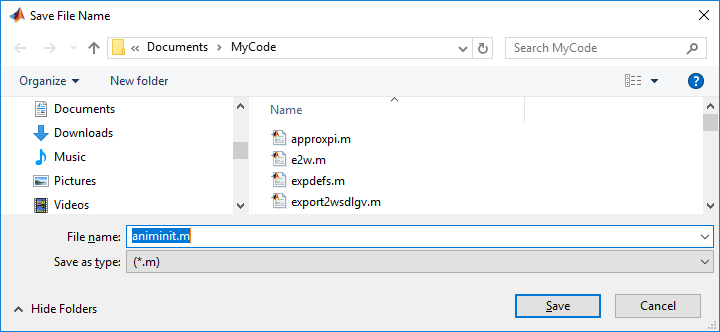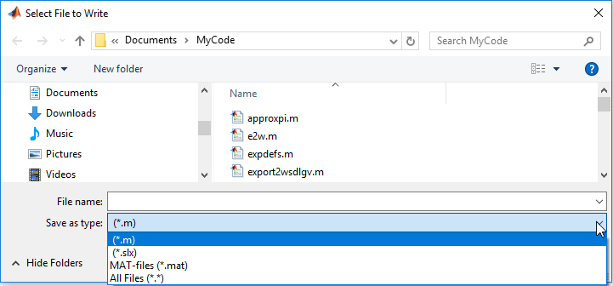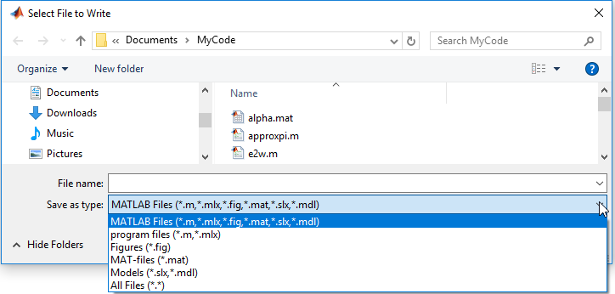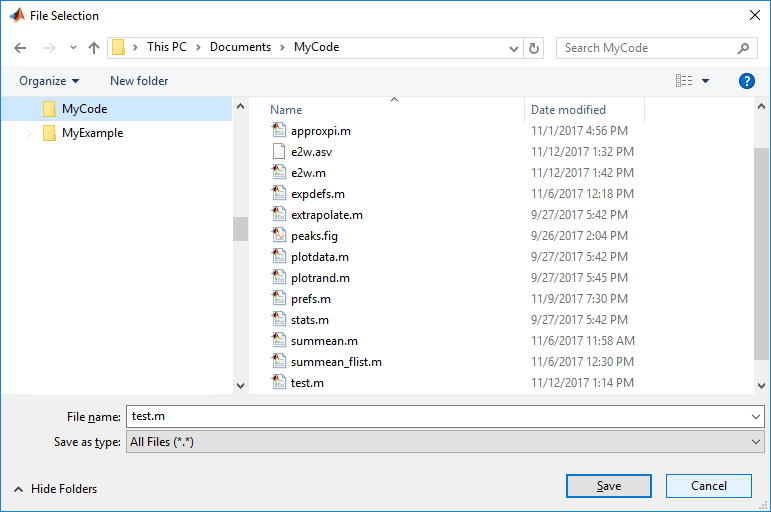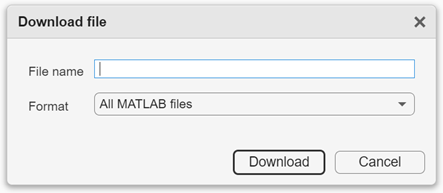uiputfile
打开用于保存文件的对话框
语法
说明
___ = uiputfile( 仅显示扩展名与 filter)filter 匹配的文件。在某些平台上,uiputfile 也会显示任何与 filter 不匹配的文件,但它们会灰显。uiputfile 函数将 All Files 追加到文件类型列表中。
如果 filter 是文件名,则 uiputfile 会在文件名字段中显示该文件名,并使用它的文件扩展名作为默认过滤器。
可以将此语法与上述语法中的任何输出参量结合使用。
示例
输入参数
输出参量
详细信息
提示
要使用 MATLAB 和 MATLAB 工具箱函数将数据写入用户指定的文件和位置,可使用
uiputfile返回的路径和文件名。例如:
版本历史记录
在 R2006a 之前推出
